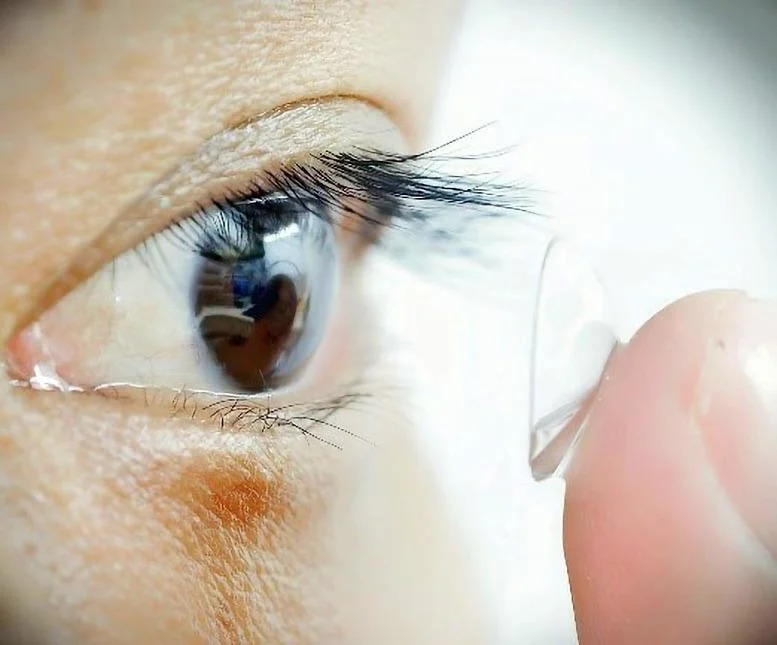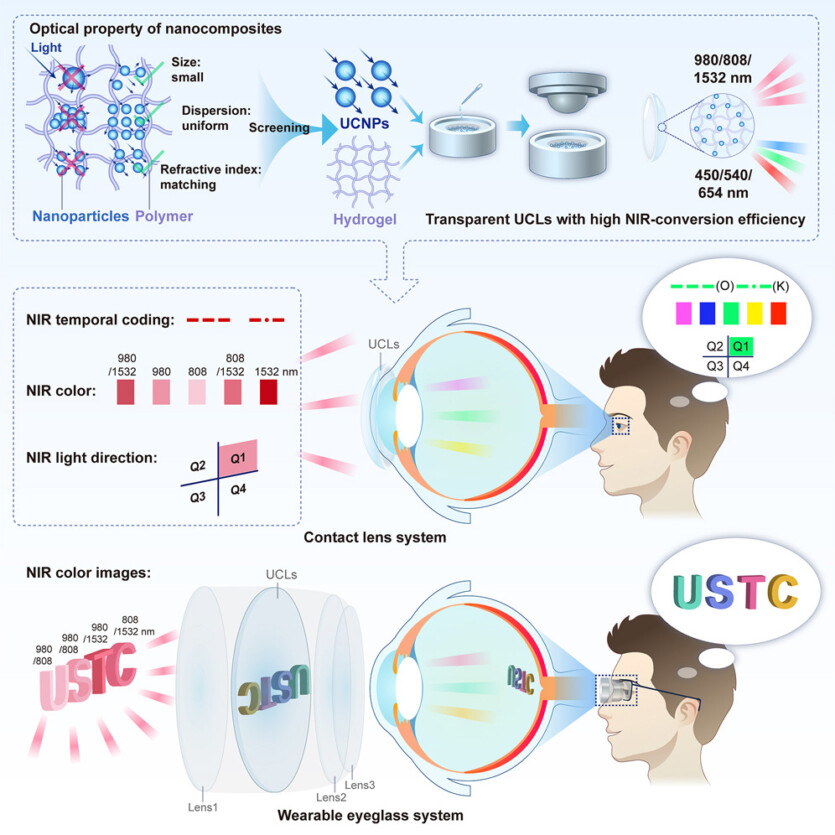
Scientists from the The Chinese University of Science and Technology has created contact lenses, that allow you to see infrared light.
It is noted that, unlike night vision devices, these lenses do not require a power source and allow you to see several wavelengths of infrared light at the same time. Due to their transparency, a person can see both ordinary light and infrared light at the same time.
«Our research opens up the potential for non-invasive wearable devices that will give people super vision. This material has many potential applications. For example, flickering infrared light can be used to transmit information for security, rescue, encryption, or anti-counterfeiting purposes», — explains neuroscientist and senior author of the study Tian Xue.
Thanks to special nanoparticles, the lenses absorb infrared light and convert it into light visible to the human eye, usually in the range of 400 to 700 nm. The technology captures infrared light invisible to the human eye in the range of 800 to 1600 nm.

Previous studies in mice have shown that rodents can see in the infrared after being injected directly into the eye. However, scientists have now achieved similar results by simply integrating nanoparticles into soft lenses. To create the contact lenses, the team combined the nanoparticles with flexible, non-toxic polymers used in standard soft contact lenses.
During experiments with mice, scientists found that they demonstrate behavior that indicates that the rodents have been able to see infrared light. When the mice were forced to choose between a dark box and a box illuminated with infrared light, the rodents with contact lenses chose the dark box, while the mice without contact lenses showed no preference. The pupils of mice with contact lenses constricted in the presence of infrared light, and brain imaging showed that infrared light caused activation of their visual processing centers.
People with these lenses were able to detect flickering Morse code-like signals and perceive the direction of incoming infrared light. As emphasized by Tian Xue, when the participants of the study closed their eyes, they could see near-infrared light even better.

Additional customization of the contact lenses allows users to distinguish between different spectra of infrared light. For example, infrared wavelengths of 980 nm were converted to blue light, wavelengths of 808 nm were converted to green light, and wavelengths of 1532 nm were converted to red light.
In addition, these lenses can be modified to allow colorblind people to see wavelengths that they cannot naturally see. As noted by Tian Xue, by converting red visible light into something close to green, the technology makes it possible to make visible what usually remains invisible to people who do not distinguish between colors.
Since contact lenses, due to their close proximity to the retinas have a limited ability to distinguish small details, the developers have created a model of glasses with the same nanoparticle technology. These glasses allow you to see infrared light with higher resolution.The researchers are currently working on increasing the sensitivity of the lenses so that they can detect weaker sources of infrared light.
The results of the study were published in the journal Cell
Source: SciTechDaily

Spelling error report
The following text will be sent to our editors: